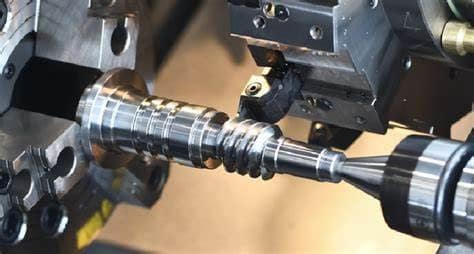In the ever-evolving landscape of industrial manufacturing, 数控车削 stands as a cornerstone of precision and efficiency. But what exactly makes 数控车削 so essential in today’s high-tech production processes? Whether you’re an industry veteran or a newcomer exploring manufacturing technologies, understanding the full potential of 数控车削 can transform how you approach production.
什么是 数控车削?
At its core, 数控车削 is a machining process that involves rotating a workpiece while a cutting tool removes material to shape the piece into the desired form. The term CNC stands for Computer Numerical Control, meaning that these machines operate based on precise digital instructions. This process is particularly effective for creating cylindrical or round parts, making it invaluable across industries like aerospace, automotive, and medical manufacturing.
How Does CNC Turning Work?
The magic of 数控车削 lies in its precision and automation. The machine rotates the material at high speeds, while cutting tools move along different axes to carve out intricate designs. A computer program dictates every movement, ensuring unparalleled accuracy and consistency, even for complex geometries.
Benefits of CNC Turning
- Unmatched Precision: The computerized control system allows for exact measurements, minimizing human error.
- High Efficiency: Once programmed, a 数控车削 machine can run for hours with minimal supervision.
- 成本效益: Reduces material waste and operational costs by minimizing errors.
- 多功能性: Suitable for a wide range of materials, including metals, plastics, and composites.
- 一致性: Every piece produced meets the same high-quality standard, ideal for mass production.
Key Applications of CNC Turning
数控车削 plays a pivotal role in manufacturing components for various industries:
- 航空航天: Producing high-precision engine parts.
- 汽车: Crafting intricate gear systems and engine components.
- 医疗设备: Manufacturing surgical instruments and prosthetics.
- 电子产品: Creating connectors and housings for sensitive components.
Challenges in CNC Turning
Despite its many advantages, 数控车削 comes with challenges:
- Initial Setup Costs: Machines and software can be expensive to implement.
- Skilled Workforce Requirement: Operators must understand programming and machine operation.
- Maintenance Needs: Regular servicing is essential to maintain precision and efficiency.
Future of CNC Turning
With advancements in artificial intelligence and machine learning, the future of 数控车削 promises smarter automation, real-time error detection, and even greater levels of precision. The integration of IoT (Internet of Things) in manufacturing could revolutionize how machines communicate and operate.

最终想法
In an age where precision, efficiency, and innovation drive success, 数控车削 remains a vital tool in the manufacturing world. Embracing this technology can lead to better product quality, faster turnaround times, and a competitive edge in a crowded market.